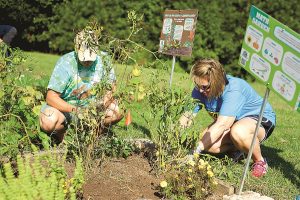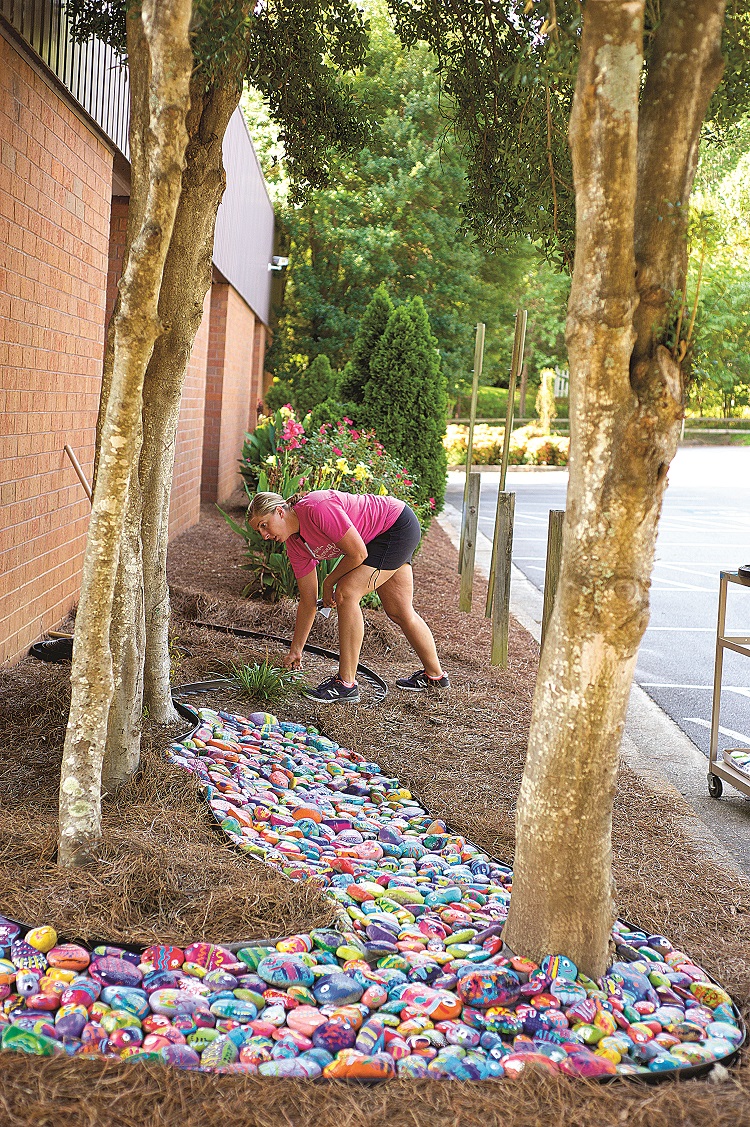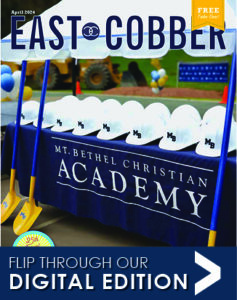Kids, dirt and learning really do go together. If you have ever been with a child outside, or remember your own childhood, it was when your hands got a little dirty that curiosity peaked and the fun began. And admittedly for some of you out there it may also have been a bit of shock and a bit of yuck, “what is this stuff?”
School gardens are ‘in’ now. Urban farms, raised beds and vertical hydroponic green walls are more than cool. Most schools can boast some form of gardens on their campus. However, there are plenty of examples of school gardens that were planted by well-meaning parents or teachers with the absolute best intentions but with little results to show a year or two later. So, what makes a school garden successful:
* Education leaders – willing to take a calculated risk and a long term view
* Parent support – PTA funding to seed a program and plenty of volunteers
* Community Partnerships – to support the expansion of programs?
Success lies somewhere between education leaders willing to take learning outside the classroom environment, teachers willing to commit coveted teaching time, and parents (and grandparents) willing to volunteer. We are in our 4th year of learning in Mount Bethel Elementary’s campus gardens and we truly are just getting started. It began with a teacher’s vision, Ms. Maureen Mullins, to get her third grade students’ hands in the dirt to learn. So, with a passionate teacher, a principal that had the long vision on learning, Ms. Jessica Appleyard, and a supportive PTA we started with a small sad area of dirt between a teacher parking lot and sidewalk at the far (dry) end of the school. During one Saturday parent student workday we built four 4’x8’ cedar raised beds, called it the MBES Kitchen Garden and eventually hung a sign to make it official.
Four years later we annually celebrate “Third Grade Salad Day” in May; feeding 200+ third graders the fruits of their labor (literally) with a paper cup of chopped kale, rainbow chard, spinach, onions and romaine lettuces tossed fresh with a parsley, chives and oregano olive oil salad dressing. We expanded with more kitchen garden beds on the grounds, installed watering stations (hose winders stretched across parking lots to reach dry beds) and erected vegetable marker signs on Home Depot paint stirrers. Now each of the eight third grade classes are in the gardens 2-3 times a year for a lesson.
School gardens are about more than planting. They are a literal canvas to teach curriculum standards of math (How many square feet are available to plant in a 4×8 foot bed? What about four beds of the same size?), science (what role do worms play in soil…remember the book, Everybody Poops?), and even market economics (how does the lettuce grown in a field make it to your dinner plate and who contributed to that process?). Just last week the school completed its first school wide art installation. Inspired by the gardens, art teachers Catherine Trosclair and Rachael Astorga had the vision to extend students’ art outdoors. Rocks were painted by every student and laid out in a sort of Dr. Seuss-esque welcoming riverbed located at the school’s front doors.
We had to recognize that the gardens must assist teachers who are interested to get learning outside and not be forced on them. We studied other schools in the area and asked what worked and what did not. Hence, we are still taking it slow. Only this year will we expand beyond third grade to teach Plant Life Cycle to second graders in the gardens with those teachers that are interested. The critical success factor for this expansion will be additional parent involvement as volunteer “Garden Parents”.
The next big step for our gardens is the development of permanent learning signposts to enable authentic reading experiences for the students (What is the Georgia migration path of the Monarch in our Butterfly Garden?) and to support teachers with more independent opportunities to take their classes outside. Community partnerships, to sponsor the learning signage, will be critical to accomplish this goal.
So, it is baby steps for us to see our learning gardens grow. Gardens are not just a fad or a school year committee project. They require educators with the long view and supportive and active parent volunteers. School gardens are dependent on a strong and committed community. It is that same committed community that educates our children so well in Cobb County.
By Jennifer Rust



Jennifer Rust and her husband, Bruce Lahood, live in the Easthampton neighborhood. Both of their children attended Mt. Bethel Elementary School. Jennifer works as a part-time management consultant but she is most happy when her hands are dirty in small garden design and installation.







